Compare Electricity & Gas in Victoria
We make comparing energy Simples! Use your bill to get a quote in under 2 minutes




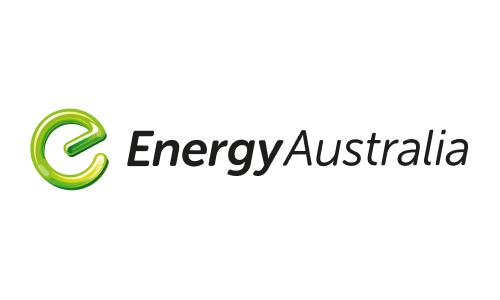
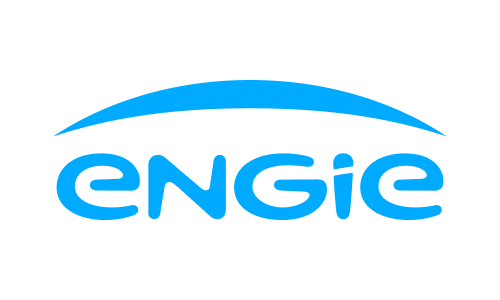
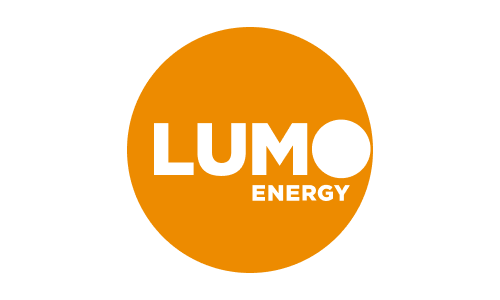


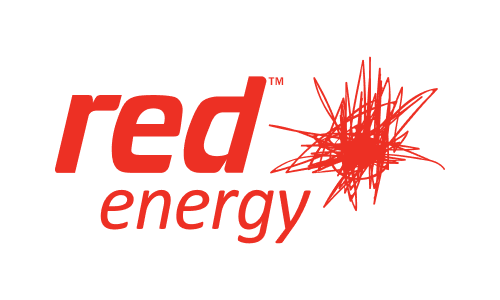
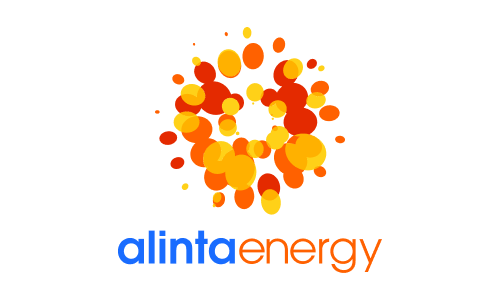
We don’t have access to all of the products available in your area: we do not compare all brands in the market, or all products offered by all brands. At times certain brands or products may not be available or offered to you. Learn more.
What’s the difference between types of VIC energy plans?
We’ve compiled this table on what our energy comparison service for Victoria can offer to you and the potential benefits you can receive by switching plans. This information should be used as a guide only, as it may vary depending on your address, whether natural gas is available at your property and the providers and plans currently available to compare.
Electricity only
Our service can detail options relevant to your property address, but not all plans or benefits may be available to you.
- Urgent same-day connections
- Flat vs Time of export solar feed-in tariffs
- GreenPower options
- Variable or fixed rates
- Standing offers
Gas only
If your home has natural gas, here’s how you can take control of your gas plan and save.
- Urgent three-business-day connections
- Tiered usage rates
- Winter/summer rates
- Standing Offers
- Same-day connections
- Renewable energy options
Electricity and gas
You can search and choose new electricity and gas plans at the same time – even if you’re choosing different providers.
- Urgent connections
- Mix and match your retailers
- Solar, electricity and gas rates
- Bill comparison
- Variable or fixed rates
Electricity only
Different plans will offer different deals. Compare now to see which benefits may be available to you.
- New customer sign-up-credit
- No exit fees
- Guaranteed discounts (e.g. 12-month benefit period)
- Conditional discount (e.g. pay-on-time)
- Perks (free subscription services, discounts on fuel, vouchers and more)
Gas only
Different plans will offer different deals. Compare now to see which benefits may be available to you.
- New customer sign-up-credit
- No exit fees
- Guaranteed discounts (e.g. 12-month benefit period)
- Conditional discount (e.g. pay-on-time)
- Perks
Electricity and gas
Different plans will offer different deals. Compare now to see which benefits may be available to you.
- New customer sign-up-credit
- No exit fees
- Guaranteed discounts (e.g. 12-month benefit period)
- Conditional discount (e.g. pay-on-time)
- Perks (free subscription services, discounts on fuel, vouchers and more)
Top 3 things to know about energy in VIC
It pays to compare energy plans
Compare energy plans in minutes and start saving today.
Simple to use
Get started by answering a few quick questions to help us understand your energy needs.
Compare & save
Save time and money by easily comparing options from a range of energy providers side-by-side.
Switching is easy
Follow a few easy steps online to switch to a new energy deal that suits you and your budget.

Why compare with us?
Our smart comparison technology is trusted, free, safe and secure.
Safe & secure
We take data privacy and security seriously, and will only use your information with your permission. You can read our full privacy policy here.

We believe the best decisions start with a comparison.
We’re proud to have helped millions of Aussies look for a better deal.


A guide to energy in Victoria
Updated 26 June 2025

Discover how you could save money on your energy bill
Don’t get caught out by Victoria’s four seasons in one day.

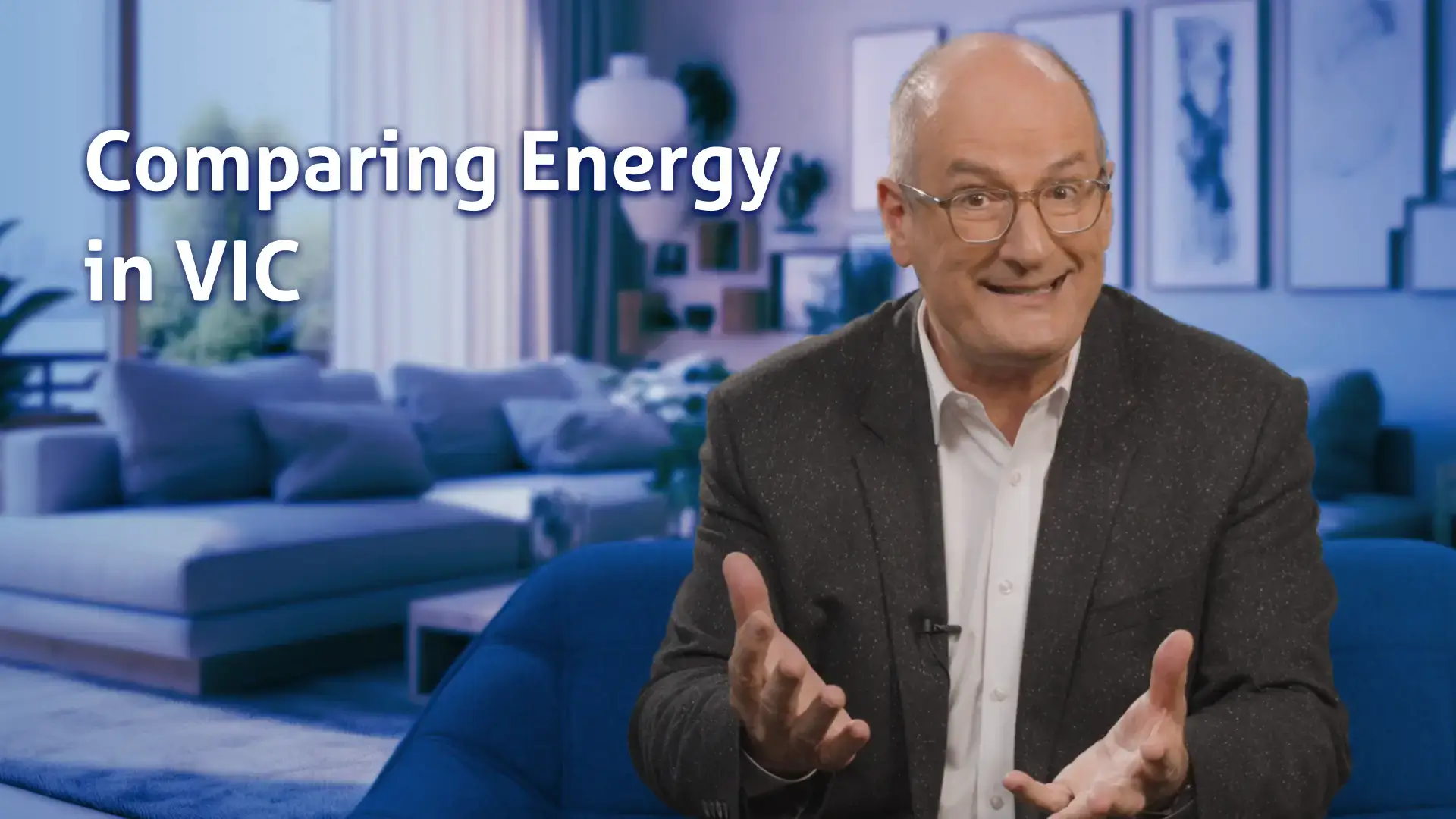

If you live in Victoria, you’re probably familiar with the phrase four seasons in one day. And with weather that fickle, keeping your home warm or cool can be expensive. Compare the Market surveyed more than a thousand Aussies and found over half had been switching off to save, when instead, they should be switching over. Turning off lights or using the aircon less could save you a dollar or two.
But by far, the best way to save is by comparing energy plans to make sure you’re on a competitive deal. In fact, Victorians are able to compare both gas and electricity, yet a whopping fifteen percent of Victorian households are currently on the Victorian Default Offer. That’s four hundred thousand customers who could be paying more than they need. Our experts at Compare the Market have these tips to help you navigate different rates, tariffs, and discounts.
Number one, keep your energy bills on hand. That way, you can compare plans based on your actual usage. You’ll get more accurate estimates to help you find good value. Two, compare your electricity and gas separately.
If you have both, Purchasing separate plans from different providers will often work out cheaper. Number three, keep an eye out for the comparison percentage against the Victorian Default Offer. That’s the reference price that all market offers from energy retailers will compare against. The bigger the percentage, the better, but remember some retailers may have other deals and bill credit offers on top of the discount.
And you don’t have to wait until your next bill’s due. Switching to a new electricity provider can take as little as two business days, which means you can potentially take advantage of your new rate sooner. Meanwhile, gas suppliers will change over from your next billing date. It’s quick, it’s free, and Compare the Market makes it easier than you could imagine.
Avoid bill shock, and get comparing today with Compare the Market.
Expert tips for finding the right energy plan for you
Our Head of Energy, Meredith O’Brien, has some top tips for helping you find a suitable Victoria energy plan.

Compare electricity and gas separately
You don’t need to use the same energy provider for your gas and electricity. In fact, you may be able to find cheaper options by purchasing individual plans with different providers.
Keep your details handy when comparing
Have your energy bill handy so you can input the details into our comparison tool. This will provide an estimate based on your historical usage and you can compare the difference between what you could have paid and what you did pay. When signing up online, you’ll also want to have a form of ID (e.g. drivers license) on hand.
Choose the right tariff for your needs
If relevant to your circumstances, consider taking advantage of a time of use tariff to better manage your usage. You can spread non-time critical energy usage from peak demand times to off-peak times. If you’re able to do most of your large energy consumption during the day and aren’t at home or using much electricity from the early afternoon to late evening, then switching to a time of use tariff may be cheaper for you.
Choosing the right VIC energy plan for you
Why compare energy in Victoria?

- Victoria is home to a range of energy plans. If your current plan doesn’t offer a discount or a cheap price per kilowatt, now’s the time to compare. Why? Victoria is one of the most competitive energy markets in Australia, and there are so many options available.
- Choose different gas and electricity retailers. Rather than bundling your energy together, you have the option of comparing the best deals for both gas and electricity, giving you more ways to save.
- Discover any available electricity discounts. Many Australian customers haven’t compared their energy plan in years, which means the original discounts they received could have expired. Comparing plans can help you find a new discount on your energy usage.
It’s easy to find competitive pricing on an energy plan that suits your needs and household budget. So whether you’re looking for the best solar feed-in tariff in VIC for your home, or simply after a better deal, try our energy comparison service today to get started.
How does the energy market work in Victoria?
Victoria’s energy market is deregulated, meaning energy providers (also called retailers) can enter the market and compete for your business. With more companies offering energy plans, there’s usually a higher level of commercial rivalry, which typically results in more competitive energy pricing as providers try to attract more customers.
You could save on your power and gas bill by simply comparing electricity and gas plans in Victoria and switching to a provider that satisfies your energy needs, at a cost that’s in line with your household utilities budget.
What is the Victorian Default Offer (VDO)?
While providers can set their own prices for electricity, the Victorian Government has established the Victorian Default Offer (VDO). The VDO helps ensure you aren’t paying too much for your electricity usage if you haven’t looked for a better deal on your plan in a while.
The VDO is considered a fair price for electricity for customers to pay as a standing offer, while market offers may be priced higher or lower than the VDO. These prices change from 1 July every year, and is based on your area’s typical usage and supply charges.
While this helps keep costs low for those who don’t compare energy in Victoria, providers also offer discounted plans that are much cheaper than the VDO. If you’re in Victoria and are on the VDO, you could be missing out on potential savings.
The VDO prices for residential customers on a flat rate tariff in the 2024-2025 period are:1
| Distribution zone | Supply charge | Usage charge structure | Flat rate usage charge per kilowatt-hour (kWh) | Controlled load usage charge per kilowatt-hour (kWh) |
|---|---|---|---|---|
| AusNet Services | $1.3354 | Block 1 : Up to 1020 kWh during a quarterly period | $0.3536 | $0.2512 |
| Block 2: Over 1020 kWh during a quarterly period | $0.3617 | |||
| CitiPower | $1.1673 | Anytime | $0.2575 | $0.1901 |
| Jemena | $1.2105 | Anytime | $0.3054 | $0.2362 |
| Powercor | $1.3163 | Anytime | $0.3045 | $0.2226 |
| United Energy | $1.0955 | Anytime | $0.2884 | $0.2105 |
| Source: Victoria State Government. Victorian Default Offer price review 2024–25. Published May 2024. Accessed December 2024. | ||||
The VDO prices for residential customers on a time of use tariff in the 2024-2025 period are:1
| Distribution zone | Supply charge | Peak usage charge structure per kilowatt-hour (kWh) (3pm to 9pm) | Off peak usage charge per kilowatt-hour (kWh) (All other times) | Controlled load usage charge per kilowatt-hour (kWh) |
|---|---|---|---|---|
| AusNet Services | $1.3354 | $0.4716 | $0.2512 | $0.2512 |
| CitiPower | $1.1673 | $0.3446 | $0.2087 | $0.1901 |
| Jemena | $1.2105 | $0.3870 | $0.2420 | $0.2362 |
| Powercor | $1.3163 | $0.4052 | $0.2457 | $0.2226 |
| United Energy | $1.0955 | $0.3830 | $0.2313 | $0.2105 |
| Source: Victoria State Government. Victorian Default Offer price review 2024–25. Published May 2024. Accessed December 2024. | ||||
Minimum solar feed-in tariff for Victoria
Victorian households and small businesses may benefit from searching for solar feed-in tariffs if they have a solar energy system. The Victorian government creates minimum feed-in tariff rates that are updated each year to make sure you’re getting a fair price for any electricity you export to the grid. However, this doesn’t mean it’s the best solar feed-in tariff in Victoria so it’s worth comparing to see your other options.
Providers have offered Victorians the choice between a single rate or time-varying tariff. This means you can receive the same amount back for your energy usage no matter when it’s exported into the grid or get a feed-in tariff that varies depending on the time of day (e.g. if you have solar battery and can export electricity during peak demand times or when the sun isn’t shining).
For flat rate solar feed-in tariffs, the minimum rate is 3.3 cents/kWh for the 2024-2025 period.2
There are also two time-varying options. The minimum rates are as follows:
Option 1
| Period | Weekday | Weekend | Cents per kWh |
|---|---|---|---|
| Overnight | 10pm to 7am | 10pm to 7am | 7.6 |
| Day | 7am to 3pm, 9pm to 10pm | 7am to 10pm | 2.8 |
| Early evening | 3pm to 9pm | N/A | 7.0 |
| Source: Essential Services Commission. Minimum feed-in tariff review 2024-25. Published February 2024. Accessed June 2023. | |||
Option 2
| Period | Everyday | Cents per kWh |
|---|---|---|
| Peak | 4pm to 9pm | 8.4 |
| Off-peak | 10am to 2pm | 2.1 |
| Shoulder | 9pm to 10am, 2pm to 4pm | 4.1 |
| Source: Essential Services Commission. Minimum feed-in tariff review 2024-25. Published February 2024. Accessed June 2023. | ||
Electricity distributors and providers in Victoria
Victoria electricity distributors
Distributors are responsible for maintaining powerlines, poles, pipes and meters. They connect your property to electricity powerlines and gas pipelines. If you experience a power outage or your meter stops working, your distributor is who you should contact. Keep in mind, you cannot switch distributors.
| Company | Service area |
|---|---|
| AusNet Services | Outer northern and eastern suburbs and eastern Victoria |
| Citipower | Melbourne City and inner suburbs |
| Jemena | Northern and north-western suburbs |
| Powercor Australia | Western Victoria and western suburbs |
| United Energy | Mornington Peninsula and southern suburbs |
Electricity providers in Victoria
Electricity providers (also known as retailers) bill you for your energy consumption while distributors supply it. While you can’t switch distributors, you can switch providers easily.
Below is a list of the current electricity retailers in Victoria.
Note: We don’t compare energy products from all retailers on this list as we don’t compare all brands in the market or all products offered by all brands. Information about the partners we currently compare is available here.
- 1st Energy
- AGL
- Alinta Energy
- Amber Electric
- Arcline by RACV – Energy
- Blue NRG
- CovaU Energy
- Diamond Energy
- Dodo Power & Gas
- Energy Locals
- EnergyAustralia
- ENGIE
- Flow Power
- GloBird Energy
- Indigo Power
- Kogan Energy
- Lumo Energy
- Momentum Energy
- Nectr
- Next Business Energy
- Origin Energy
- OVO Energy
- Pacific Blue Retail
- Powershop
- Red Energy
- Sumo
- Tango Energy
The information provided above is based in the postcodes of 3000 and 3220 and is accurate as of 10 June 2025. Data sourced from the Department of Environment, Land, Water and Planning, Victoria.
Who is the best energy provider in Melbourne?
The best energy provider in Melbourne for you will vary depending on your specific household needs, financial situation, distributor and tariff. Each individual electricity and gas provider in Melbourne will offer varying plans, rates, discounts and conditions (e.g. exit fees).
For one household, the “best” energy provider in Victoria may be the cheapest provider that offers a flat rate tariff. Whereas for another household, the “best” provider may be one with the most flexible plan. Consider your situation when looking for the most suitable provider for you.
You can get a free quote from our energy comparison service, where you can compare the daily supply charge, usage charges, estimated costs, exit fees (if any) and more!
Gas distributors and providers in Victoria
Gas distributors
There are only three natural gas distributors in Victoria and each distributor supplies gas to a separate section of the state. The companies are:
- Ausnet Services
- Australian Gas Networks
- Multinet.
Dual fuel providers in Victoria
Some energy providers in Victoria offer both electricity and gas as a dual plan. Others provide these utilities as separate plans.
For example, one provider may offer electricity in all suburbs in Victoria. But they may not offer gas to suburbs in East Melbourne. To find out which providers offer energy in your area, use our energy comparison service.
Note: We don’t compare energy products from all retailers on this list as we don’t compare all brands in the market or all products offered by all brands. Information about the partners we currently compare is available here.
The electricity and gas providers in Victoria below offer both as bundles and separate plans. However, you may not have access to both from the same provider, depending on where you live.
- 1st Energy
- AGL
- Alinta Energy
- Arcline by RACV – Energy
- CovaU Energy
- Dodo Power & Gas
- EnergyAustralia
- Energy Locals
- ENGIE
- GloBird Energy
- Kogan Energy
- Lumo Energy
- Momentum Energy
- Origin Energy
- Powershop
- Red Energy
- Sumo
- Tango Energy
The information provided above is accurate as of 6 June 2025. Data sourced from the Department of Environment, Land, Water and Planning, Victoria.
Cheapest electricity in different cities
Cheapest electricity Melbourne
While everyone’s electricity needs and bills are going to be different, we’ve provided a snapshot of the cheapest plans available from electricity suppliers in Melbourne which can help give you an idea of how much electricity plans could cost you.
You can compare available energy plans in minutes for free through our comparison service too.
| Provider/Retailer | Plan Name | Annual Cost (inc. discounts) | Annual Cost (excl. discounts) | Discount Benefit Period | Contract Term |
|---|---|---|---|---|---|
| Flow Power | Flow Home – TOU – Switch & Save $300 | $1,000.00 | $1,300.00 | None | None |
| GloBird Energy | GloBird Combo GLOSAVE Residential (Flat Rate Without Controlled Load)-Citipower | $1,030.00 | $1,090.00 | None | None |
| Lumo Energy | Lumo Value | $1,040.00 | $1,040.00 | None | Other |
| Alinta Energy | HomeSaver – Single Rate | $1,060.00 | $1,060.00 | None | 1 Year |
| OVO Energy | The One Plan | $1,060.00 | $1,060.00 | None | Ongoing |
| Pacific Blue Retail | Blue First | $1,110.00 | $1,110.00 | None | Ongoing |
| Tango Energy | eSelect | $1,110.00 | $1,110.00 | None | Ongoing |
| Sumo | Sumo Switch (Single Rate) | $1,110.00 | $1,110.00 | None | Ongoing |
| Arcline by RACV – Energy | Home Energy Plan | $1,110.00 | $1,110.00 | None | None |
| Next Business Energy | Next Assured 5% Discount Citipower 5 Day TOU (C3RB) | $1,160.00 | $1,160.00 | None | Ongoing |
| Energy Locals | Home Classic | $1,160.00 | $1,160.00 | None | None |
| Red Energy | Living Energy Saver | $1,170.00 | $1,170.00 | None | Ongoing |
| Origin Energy | Origin Go Variable (2 Period TOU) | $1,200.00 | $1,200.00 | None | 1 Year |
| EnergyAustralia | Flexi Plan – Time of Use | $1,200.00 | $1,200.00 | None | Ongoing |
| Momentum Energy | Nothing Fancy Electricity | $1,200.00 | $1,200.00 | None | Ongoing |
| AGL | Residential Smart Saver – 3rd Party | $1,200.00 | $1,200.00 | None | Ongoing |
| 1st Energy | 1st Saver, Residential – Time of Use | $1,220.00 | $1,220.00 | None | Ongoing |
| Powershop | Power House | $1,220.00 | $1,220.00 | None | Ongoing |
| Kogan Energy | Kogan Energy with free FIRST | $1,220.00 | $1,220.00 | None | Ongoing |
| Diamond Energy | Everyday Renewable Saver | $1,280.00 | $1,330.00 | Ongoing | Ongoing |
| ENGIE | VIC -ENGIE Saver elec | $1,300.00 | $1,300.00 | None | Ongoing |
| Dodo Power & Gas | Residential Market – Single Rate | $1,320.00 | $1,320.00 | None | None |
| CovaU Energy | Super Saver Residential Single | $1,330.00 | $1,330.00 | None | None |
| Indigo Power | Energy Shaper Plan | $1,340.00 | $1,340.00 | None | None |
| Amber Electric | Standing Offer: Fixed Rate | $1,370.00 | $1,370.00 | None | None |
| Blue NRG | Blue VDO TOU | $1,370.00 | $1,370.00 | None | None |
| Nectr | Nectr 100% Clean – Citipower | $1,370.00 | $1,370.00 | None | Ongoing |
The prices and information provided above are based on a house with two adults, no concessions, no solar panels, five rooms, one refrigerator, no gas, no pool, no heating or cooling, no clothes dryer, electric hot water system not on a controlled load in the postcode of 3000 and are accurate as of 10 June 2025. Data sourced from the Department of Environment, Land, Water and Planning, Victoria. Plans, prices and eligibility criteria are subject to change.
Cheapest electricity Geelong
If you’re wondering where you can get the cheapest electricity in Geelong, you’re in the right place. While the information below isn’t one-size-fits-all and your own energy bills could differ, this snapshot can help you understand what to expect.
Compare energy plans in Victoria from available providers on our comparison service for free for a more detailed comparison.
| Provider/Retailer | Plan Name | Annual Cost (inc. discounts) | Annual Cost (excl. discounts) | Discount Benefit Period | Contract Term |
|---|---|---|---|---|---|
| OVO Energy | The Free 3 Plan | $1,180.00 | $1,180.00 | None | Ongoing |
| GloBird Energy | GloBird Combo GLOSAVE Residential (Flat Rate Without Controlled Load)-Powercor | $1,180.00 | $1,240.00 | None | None |
| Alinta Energy | HomeSaver – Single Rate | $1,210.00 | $1,210.00 | None | 1 Year |
| Lumo Energy | Lumo Value | $1,210.00 | $1,210.00 | None | Other |
| Flow Power | Flow Home – TOU – Switch & Save $300 | $1,220.00 | $1,520.00 | None | Ongoing |
| Pacific Blue Retail | Blue First | $1,260.00 | $1,260.00 | None | Ongoing |
| Tango Energy | eSelect | $1,260.00 | $1,260.00 | None | Ongoing |
| Sumo | Sumo Switch (Single Rate) | $1,270.00 | $1,270.00 | None | Ongoing |
| Energy Locals | Daytime Saver | $1,280.00 | $1,280.00 | None | None |
| Arcline by RACV – Energy | Home Energy Plan | $1,290.00 | $1,290.00 | None | None |
| Powershop | Power House | $1,310.00 | $1,310.00 | None | Ongoing |
| Kogan Energy | Kogan Energy with free FIRST | $1,310.00 | $1,310.00 | None | Ongoing |
| Momentum Energy | Nothing Fancy Electricity | $1,340.00 | $1,340.00 | None | Ongoing |
| Next Business Energy | Next Assured 5% Discount Powercor 5 Day TOU | $1,360.00 | $1,360.00 | None | Ongoing |
| Origin Energy | Origin Go Variable (2 Period TOU) | $1,400.00 | $1,400.00 | None | 1 Year |
| EnergyAustralia | Flexi Plan – Time of Use | $1,400.00 | $1,400.00 | None | Ongoing |
| Red Energy | Living Energy Saver | $1,400.00 | $1,400.00 | None | Ongoing |
| AGL | Residential Smart Saver – 3rd Party | $1,400.00 | $1,400.00 | None | Ongoing |
| 1st Energy | 1st Saver, Residential – Time of Use | $1,420.00 | $1,420.00 | None | Ongoing |
| Diamond Energy | Everyday Renewable Saver – T72 | $1,480.00 | $1,540.00 | Ongoing | Ongoing |
| CovaU Energy | Super Saver Residential Single | $1,490.00 | $1,490.00 | None | Ongoing |
| Indigo Power | Energy Shaper Plan | $1,510.00 | $1,510.00 | None | None |
| Dodo Power & Gas | Residential Market – Time of Use | $1,520.00 | $1,520.00 | None | None |
| ENGIE | VIC -ENGIE Saver elec | $1,520.00 | $1,520.00 | None | Ongoing |
| Blue NRG | Blue VDO TOU | $1,590.00 | $1,590.00 | None | None |
| Nectr | Nectr 100% Clean Time of Use – Powercor | $1,590.00 | $1,590.00 | None | Ongoing |
| Amber Electric | Standing Offer: Fixed Rate | $1,600.00 | $1,600.00 | None | None |
The prices and information provided above are based on a house with two adults, no concessions, no solar panels, five rooms, one refrigerator, no gas, no pool, no heating or cooling, no clothes dryer, electric hot water system not on a controlled load in the postcode of 3320 and are accurate as of 10 June 2025. Data sourced from the Department of Environment, Land, Water and Planning, Victoria. Plans, prices and eligibility criteria are subject to change.
Energy charges, tariffs and rebates when comparing energy in Victoria
How is energy charged in Victoria?
 Victorian energy providers will typically charge you using two type of charges that you will see on your electricity bill. These are:
Victorian energy providers will typically charge you using two type of charges that you will see on your electricity bill. These are:
- Supply charges. This is a daily fee that covers the cost of your distributor supplying electricity or gas to your house or small business.
- Usage charges. These represent the actual amount of energy you use during a billing period and is typically measured by kilowatt-hours (kWh) for electricity or megajoules (MJ) for gas.
These charges will vary depending on your distributor, your energy provider and the type of tariff that you’re on.
Types of electricity tariffs
Several tariff options can influence the cost of energy in Victoria. You might be able to choose between them depending on the wiring in your house, the eligibility in your area and whether you have a smart meter.
Electricity customers may have access to the following tariffs:
- Single rate tariffs. A single rate tariff (also known as ‘peak’, ‘flat rate’, ‘general usage’ and ‘anytime’ on your electricity bill) is the most common tariff in Victoria. This tariff charges you the same rate no matter when you use your power.
- Time of use tariffs. With these tariffs you will have different electricity rates depending on when you consume electricity. In Victoria, these are only divided into ‘peak’ and ‘off-peak’ rates.
- Demand tariffs. These tariffs charge you based on how much electricity you use at a point in time, instead of your electricity usage over time – this is an additional charge applied in addition to supply and usage charges. So, if you were to run both your dishwasher and washing machine simultaneously during a demand period, your electricity demand will be increased and you will, therefore, attract a higher demand charge.
- Controlled load tariffs. Also known as a two-rate tariff or dedicated circuit, controlled load makes it possible for the retailer to charge you a rate for certain appliances in your home separately from the rest of your home. Controlled load tariffs are typically used for electric hot water systems or underfloor heating that often run during off-peak periods or overnight.
- Solar feed-in tariffs. Victorians who own solar panels can also receive a feed-in tariff (FiT). This appears as a credit on your bill for the energy your panels produce and send back into the grid. Providers must offer Victorians at least the minimum tariff, but some may offer more.
Type of gas tariffs
There are several types of gas tariffs that may affect your gas bill, these include:
- Block rate tariffs. A block rate tariff charges you for gas usage in various block rates based on your usage. Typically, you’ll pay one rate for the first ‘block’, then a second rate if your gas usage exceeds a certain amount.
- Seasonal gas tariffs. For gas, the price can change depending on the season. This is because gas is often used for heating and peak demand typically occurs in the winter months. Peak season tariffs mean you’ll pay more for gas in winter and less in summer.
- Flat rate tariffs. With this tariff, you’ll pay the same rate no matter how much you use or what season you’re in.
While what is considered the best gas plan in Victoria for you will depend on your individual circumstances, consider comparing across different providers and plans to find a price that works for you.
Which energy concessions are available in Victoria?
There are various energy concessions and rebates available to eligible Victorians, including both concessions for seniors and general concessions.
Eligible Victorians can receive a concession from the Victorian Government to help pay their household utility bills. Eligibility criteria include:
- Being on a fixed or low income
- Holding a Centrelink Pension Concession Card
- Holding a Health Care Card
- Holding a Veteran Affairs’ Gold Card or Veteran Affairs’ Pensioner Concession Card.
Concessions you may be eligible for include:
- Annual electricity concession
- Controlled load electricity concession
- Electricity transfer fee waiver concession
- Energy bill relief fund
- Excess electricity concession
- Excess gas concession
- Life support concession
- Medical cooling concession
- Non-mains energy concession
- Utility relief grant scheme
- Winter gas concession.
Are there any solar deals in Victoria?
When looking for the best solar deals in Victoria, you should check what concessions, rebates and loans may be available through government initiatives.
Occasionally, you may be able to access solar panel rebates to help with the cost of installing a solar system, and while there aren’t currently any government solar battery rebates in Victoria (accurate as of December 2024), you may still be able to take out an interest-free solar battery loan.3
Some retailers may also offer incentives and rebates, or cover the up-front cost of installation, for solar power systems, though they may require you to enter into a contract with that provider for a set period.
What is the average electricity bill in Victoria?
If you’re on the VDO, the average bill is estimated to be $1,655 for residential customers and $3,530 for small business customers, based on the average usage consumption per annum1 However, there may be cheaper energy offers that you can search for by comparing your options.
Your average bill may also vary significantly from the state’s average depending on a number of factors, such as:
- The number of people in your household
- Your energy usage habits
- What tariff you’re on
- Who your energy and gas providers are
- Who your distributor is
- What energy plan you’re on
- What incentives, discounts or concessions you’re eligible for
- If you have a solar power system.
Meet our Head of Energy, Meredith O’Brien
As the Head of Energy at Compare the Market, Meredith O’Brien believes in educating Australian customers about the everchanging gas and electricity market so they can adjust their energy usage habits and get the most out of their energy plans.
Meredith has six years within the energy industry, following 15 years of experience in financial services and is currently studying a Master of Business Administration. Meredith is a dedicated customer advocate who is passionate about empowering Australians to find the right products to suit their needs by removing the confusion from comparing.
Want to know more about energy?
1 Victoria State Government. Victorian Default Offer price review 2024–25. Published May 2024. Accessed December 2024.
2 Essential Services Commission. Minimum feed-in tariff review 2024-25. Published February 2024. Accessed December 2024.
3 Solar Victoria. Solar battery loans. Updated December 2024. Accessed December 2024.